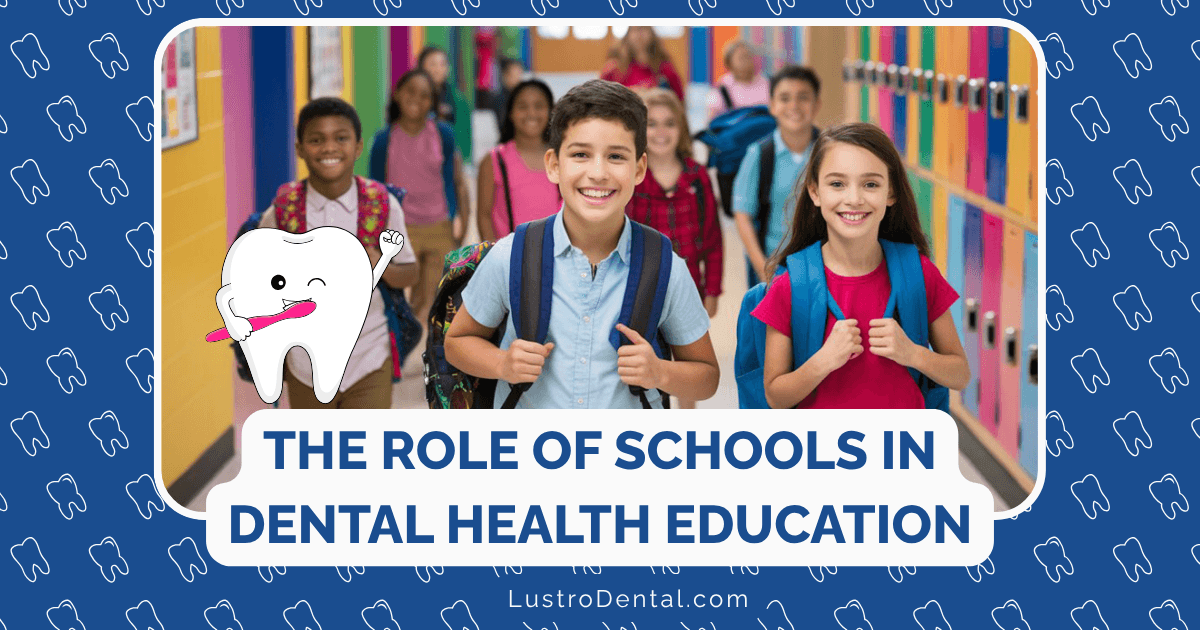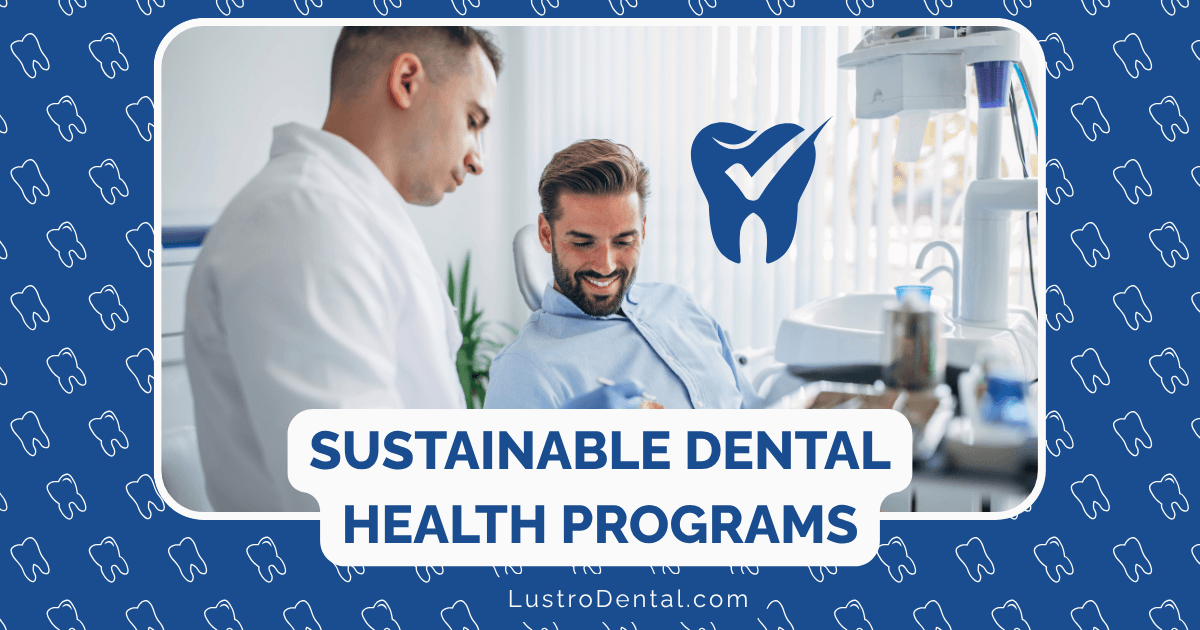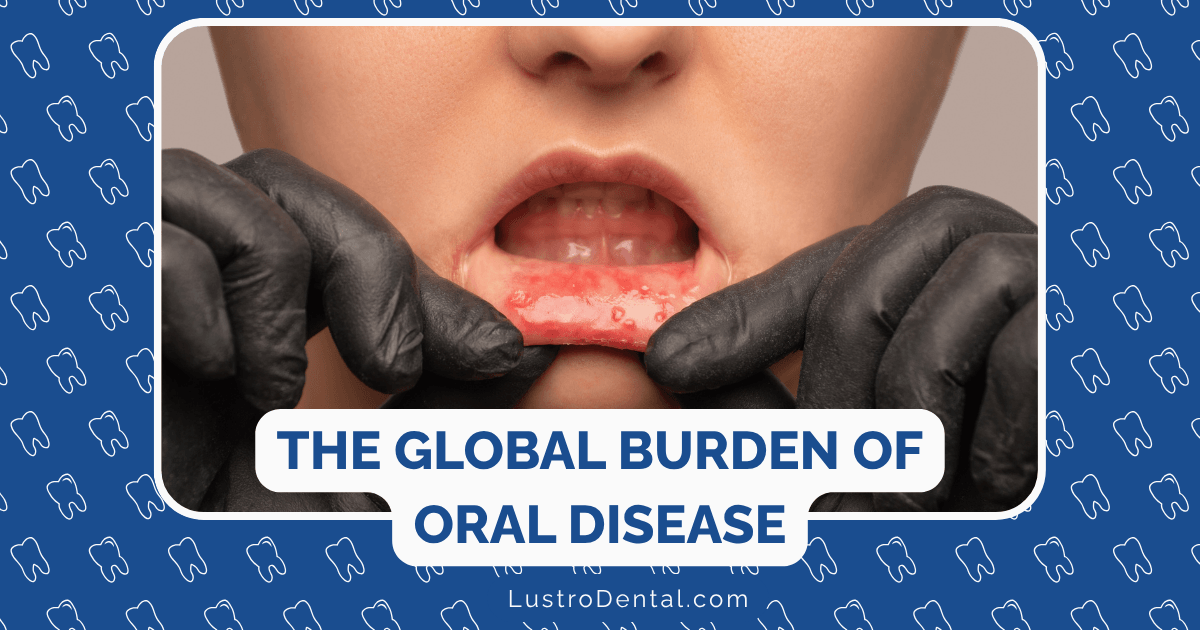The Role of Schools in Dental Health Education: Bridging the Gap Between Knowledge and Access

In the landscape of public health, schools stand as uniquely positioned institutions—reaching children across socioeconomic boundaries during their most formative years. While academic achievement remains their primary focus, schools increasingly serve as crucial platforms for health education and intervention, particularly in the realm of dental health.
The statistics paint a compelling picture: according to the National Health and Nutrition Examination Survey, 52% of children aged 6-8 have cavities in their primary teeth, and students miss more than 34 million school hours annually due to unplanned dental care. These numbers underscore not just a health crisis, but an educational one as well.
This article explores how schools can—and do—play a transformative role in dental health education, examining evidence-based approaches, implementation strategies, and the broader impact of these initiatives on both individual students and public health outcomes.
The Intersection of Oral Health and Academic Success
The connection between dental health and educational achievement is stronger than many realize. Research consistently demonstrates that poor oral health negatively impacts several aspects of a child’s educational experience:
Attendance and Learning Loss
Children with dental pain are nearly three times more likely to miss school than their peers. The American Academy of Pediatrics reports that students miss an average of 2.1 days per year due to dental problems, with higher rates among children from low-income families. These absences translate directly to learning loss, creating educational disparities that compound over time.
Classroom Concentration and Participation
Even when physically present, children experiencing dental pain struggle to concentrate and participate fully in classroom activities. A study published in the American Journal of Public Health found that children with poor oral health were significantly more likely to report difficulty with schoolwork and were less likely to complete homework assignments.
Social Development and Self-Esteem
Visible dental issues can affect children’s social interactions and self-confidence. Students with untreated decay or obvious dental problems may face bullying or social isolation, further impacting their school experience and psychological development.
Dr. Maria Chen, pediatric dentist and public health advocate, notes: “When we address dental health in schools, we’re not just preventing cavities—we’re removing barriers to learning and supporting children’s overall development and well-being.”
Comprehensive School-Based Dental Health Strategies
Effective school dental health programs typically incorporate multiple complementary approaches:
1. Curriculum Integration
Embedding dental health education within existing curricula provides consistent exposure to key concepts without requiring additional class time:
- Science classes: Teaching the biology of teeth, the process of decay, and the science behind preventive measures
- Health education: Incorporating oral hygiene instruction alongside other health topics
- Mathematics: Using dental-related statistics and data for real-world problem-solving
- Social studies: Exploring cultural differences in dental care and public health approaches worldwide
The Centers for Disease Control and Prevention offers free, standards-aligned lesson plans that teachers can adapt for different grade levels and subject areas.
2. Direct Service Programs
Beyond education, many schools now provide direct dental services:
- Screening programs: Basic dental examinations to identify children needing referral for treatment
- Preventive services: Fluoride varnish applications and dental sealant programs
- Mobile dental clinics: Partnerships bringing comprehensive dental care directly to school grounds
- School-based health centers: Integrated facilities providing dental care alongside other health services
The evidence for these approaches is compelling. A systematic review published in the Journal of the American Dental Association found that school-based sealant programs reduce tooth decay by an average of 60% for up to five years after a single application.
3. Supervised Brushing Programs
Increasingly popular in elementary schools, these programs provide:
- Daily supervised toothbrushing after lunch
- Proper technique instruction from trained staff
- Individual storage for brushing supplies
- Regular reinforcement of healthy habits
Research from the UK’s Childsmile program demonstrated that schools implementing supervised brushing saw a 7.3% caries incidence in participating children compared to 71.5% in non-participants—a remarkable difference highlighting the power of daily reinforcement.
4. Parent and Community Engagement
Effective school dental programs extend beyond school walls:
- Parent education workshops: Teaching families about oral health importance and care techniques
- Take-home materials: Providing multilingual resources for continued learning at home
- Community partnerships: Collaborating with local dental professionals for volunteer support
- Cultural competency: Tailoring approaches to reflect the diverse backgrounds of the student population
Implementation Models: What Works in Different Settings
The most successful school dental health initiatives adapt to their specific contexts:
Urban Public Schools
In densely populated areas, schools often leverage partnerships with dental schools and federally qualified health centers. For example, New York City’s School-Based Health Center program provides comprehensive dental services in over 100 schools, prioritizing neighborhoods with limited access to care.
Key success factors:
- Co-location of services within school buildings
- Integration with existing school health programs
- Streamlined consent processes
- Diverse staffing reflecting student demographics
Rural School Districts
Rural schools face unique challenges in implementing dental programs, including transportation barriers and provider shortages. Successful models often utilize:
- Mobile dental units that rotate between schools
- Telehealth connections to distant dental providers
- Training for school nurses in preventive services
- Regional coordination to maximize limited resources
The Rural School and Community Trust highlights several effective rural dental initiatives that have significantly improved access to care in underserved communities.
Private and Charter Schools
While often having more resources, these schools still benefit from structured dental health approaches:
- Wellness policies that explicitly include oral health
- Service-learning projects connecting students with community dental needs
- Parent-led initiatives funding supplemental dental education
- Partnerships with private dental practices for screening and education
The Critical Role of School Personnel
Several key stakeholders within schools drive successful dental health initiatives:
School Nurses
As frontline health professionals, school nurses often serve as dental program coordinators:
- Conducting basic oral health assessments
- Identifying students with urgent dental needs
- Facilitating referrals to community providers
- Tracking program outcomes and student participation
The National Association of School Nurses recommends one full-time nurse per school to adequately address student health needs, including oral health concerns.
Teachers
Classroom teachers integrate dental concepts into daily learning:
- Reinforcing healthy habits through consistent messaging
- Recognizing signs of dental problems affecting learning
- Incorporating dental health into existing lesson plans
- Modeling positive attitudes toward dental care
Administrators
School leadership determines program sustainability through:
- Allocating time and resources for dental initiatives
- Establishing supportive school policies
- Pursuing funding opportunities and partnerships
- Prioritizing dental health within wellness frameworks
Evidence-Based Success Stories
Several model programs demonstrate the potential impact of comprehensive school-based dental initiatives:
Maryland’s Deamonte Driver Dental Project
Named for a 12-year-old Maryland boy who died from complications of an untreated tooth infection in 2007, this program combines mobile dental services, education, and case management. Since its inception, the project has served over 15,000 children in Prince George’s County schools, reducing emergency dental visits by 60% among participating students.
Wisconsin Seal-A-Smile
This statewide initiative provides dental sealants to second and sixth-grade students, with particular focus on schools where 35% or more of students qualify for free or reduced lunch. The program demonstrates the power of targeted prevention, with participating schools showing a 30% reduction in untreated decay among students over a five-year period.
California’s Virtual Dental Home
This innovative telehealth model brings dental hygienists into schools to provide preventive care and collect diagnostic information, which is then reviewed remotely by dentists who develop treatment plans. The system has successfully increased access to dental care for thousands of underserved children while reducing costs compared to traditional delivery methods.
Overcoming Implementation Challenges
Despite their proven benefits, school dental programs face several common obstacles:
Funding Constraints
Sustainable funding remains a primary challenge for many school-based initiatives. Successful programs typically utilize multiple funding streams:
- Medicaid reimbursement for eligible services
- Federal grants through HRSA and CDC
- State oral health program allocations
- Private foundation support
- Corporate sponsorships from dental companies
The DentaQuest Partnership for Oral Health Advancement offers resources to help schools navigate funding opportunities and develop sustainable financial models.
Time and Curriculum Pressures
With increasing academic demands, finding time for dental health education can be difficult. Effective approaches include:
- Integrating oral health into required health education
- Using “teachable moments” throughout the school day
- Implementing programs during non-instructional times
- Connecting dental concepts to academic standards
Consent and Participation Barriers
Obtaining parental consent for dental services can be challenging. Programs with high participation rates typically:
- Use opt-out rather than opt-in models where legally permissible
- Provide materials in multiple languages
- Employ community health workers from the local population
- Offer incentives for returning consent forms
Staffing and Training Needs
Many schools lack personnel with dental expertise. This gap can be addressed through:
- Partnerships with dental and dental hygiene schools
- Train-the-trainer models for existing school staff
- Utilizing dental hygienists as program coordinators
- Virtual training resources for ongoing staff development
Policy Considerations and Advocacy
The sustainability and expansion of school dental programs often depend on supportive policy environments:
State-Level Policies
Several states have enacted legislation specifically supporting school-based dental health:
- Colorado’s Dental Health Care Program for Low-Income Seniors allocates funding for school-based preventive services
- Maine’s School Oral Health Program establishes guidelines and funding for school-based sealant initiatives
- Illinois’ Dental Sealant Grant Program prioritizes schools with high percentages of low-income students
Federal Support
Federal initiatives that support school dental programs include:
- HRSA’s School-Based Health Center Capital Program provides funding for facilities and equipment
- CDC’s Division of Oral Health offers technical assistance and evidence-based resources
- Medicaid’s Early and Periodic Screening, Diagnostic and Treatment (EPSDT) benefit covers preventive dental services for eligible children
Advocacy Opportunities
Schools and communities can advocate for stronger dental health policies by:
- Collecting and sharing data on program outcomes
- Engaging school boards in discussions about oral health priorities
- Participating in state oral health coalitions
- Inviting policymakers to observe successful school dental programs
Future Directions and Innovations
The field of school-based dental health continues to evolve:
Technology Integration
Emerging technologies expanding the reach of school dental programs include:
- Intraoral cameras allowing remote assessment by dentists
- AI-powered screening tools for early caries detection
- Digital health education platforms with interactive content
- Electronic health records facilitating coordination between schools and dental providers
Workforce Innovations
New approaches to staffing school dental initiatives include:
- Community dental health coordinators focusing on navigation and education
- Expanded-function dental assistants providing preventive services
- Dental therapists delivering basic restorative care in school settings
- Interprofessional teams addressing oral health alongside other health needs
Research Priorities
Ongoing research is needed to strengthen the evidence base for school dental programs, particularly in:
- Cost-effectiveness studies comparing different delivery models
- Long-term impact assessments following students through graduation
- Implementation science identifying key factors for program success
- Evaluations of telehealth approaches in school settings
Conclusion: Schools as Catalysts for Dental Health Equity
Schools represent our best opportunity to reach children with dental health education and services regardless of their socioeconomic status, geographic location, or family resources. By combining education with direct services, schools can address both knowledge gaps and access barriers simultaneously.
The most successful approaches recognize that dental health is not merely an add-on to school activities but an integral component of creating environments where students can thrive academically and personally. When implemented thoughtfully and supported adequately, school dental health initiatives deliver returns far beyond improved oral health—they contribute to educational equity, reduced healthcare costs, and lifelong health literacy.
As Dr. James Williams, school health policy expert, observes: “Schools cannot solve the dental health crisis alone, but no solution to that crisis can succeed without them. They are the most universal, accessible institution we have for reaching children during their formative years.”
For educators, health professionals, and policymakers committed to children’s wellbeing, strengthening the role of schools in dental health education represents one of our most promising strategies for creating healthier communities and brighter futures.
What successful dental health initiatives have you observed in your local schools? Share your experiences and insights in the comments below.







